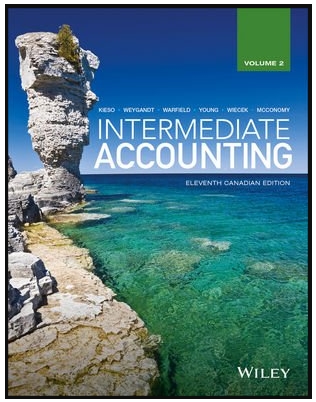Dela Corporation initiated a defined benefit pension plan for its 50 employees on January 1, 2017. The
Question:
.png)
There were no balances as at January 1, 2017, when the plan was initiated, because no credit was given for past service. The rate used to discount the company's pension obligation was 13% in 2017, 11% in 2018, and 8% in 2019. The service cost component of net periodic pension expense amounted to the following: 2017, $55,000; 2018, $85,000; and 2019, $119,000. No benefits were paid in 2017, but $30,000 was paid in 2018, and $35,000 in 2019. (All benefits were paid and all actuarial gains and losses were determined at the end of the year.) The company applies ASPE.
Instructions
Depending on what your instructor assigns, do either parts (a), (b), (c), (e), and (f) or parts (d), (e), and (f). (Round all answers to the nearest dollar.)
(a) Prepare a continuity schedule for the defined benefit obligation over the three-year period.
(b) Prepare a continuity schedule for the plan assets over the three-year period.
(c) Calculate the amount of net periodic pension expense that the company will recognize in each of 2017, 2018, and 2019. Identify any components of pension expense that should be separately disclosed.
(d) Prepare and complete a pension work sheet for each of 2017, 2018, and 2019. Identify any components of pension expense that should be separately disclosed.
(e) Determine the plan surplus or deficit at December 31, 2019, and the balance of the Net Defined Benefit Liability/ Asset account that will be reported on the December 31, 2019 balance sheet. Briefly explain any difference or similarity in these amounts.
(f) Discuss what accounting policy choices, if any, are available under ASPE in accounting for defined benefit plans such as this.
A Corporation is a legal form of business that is separate from its owner. In other words, a corporation is a business or organization formed by a group of people, and its right and liabilities separate from those of the individuals involved. It may...
Step by Step Answer:

Intermediate Accounting
ISBN: 978-1119048541
11th Canadian edition Volume 2
Authors: Donald E. Kieso, Jerry J. Weygandt, Terry D. Warfield, Nicola M. Young, Irene M. Wiecek, Bruce J. McConomy





